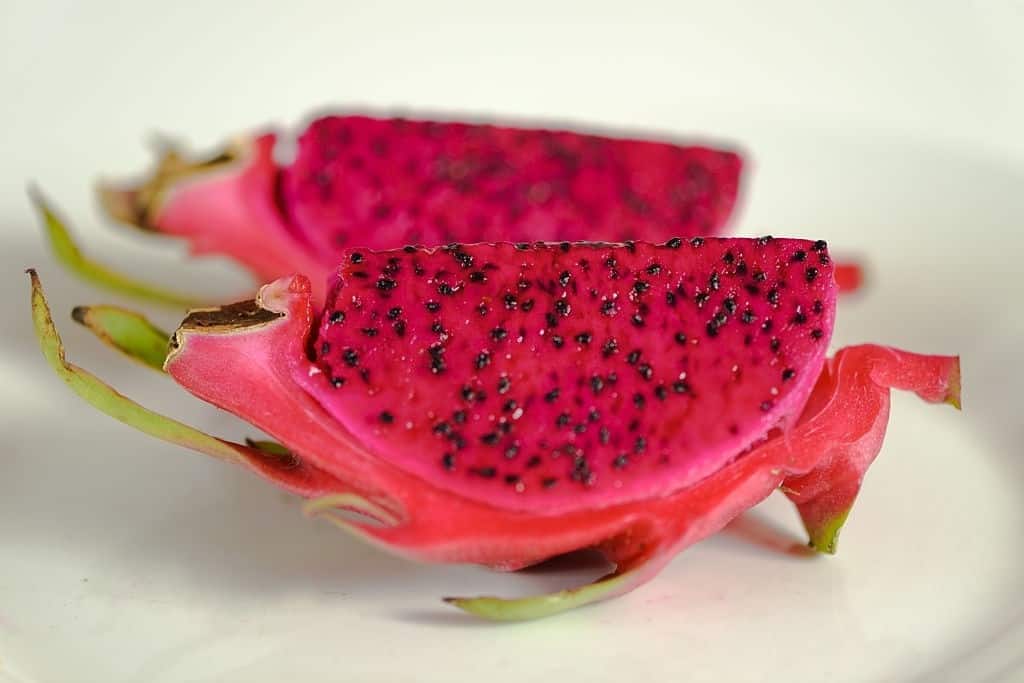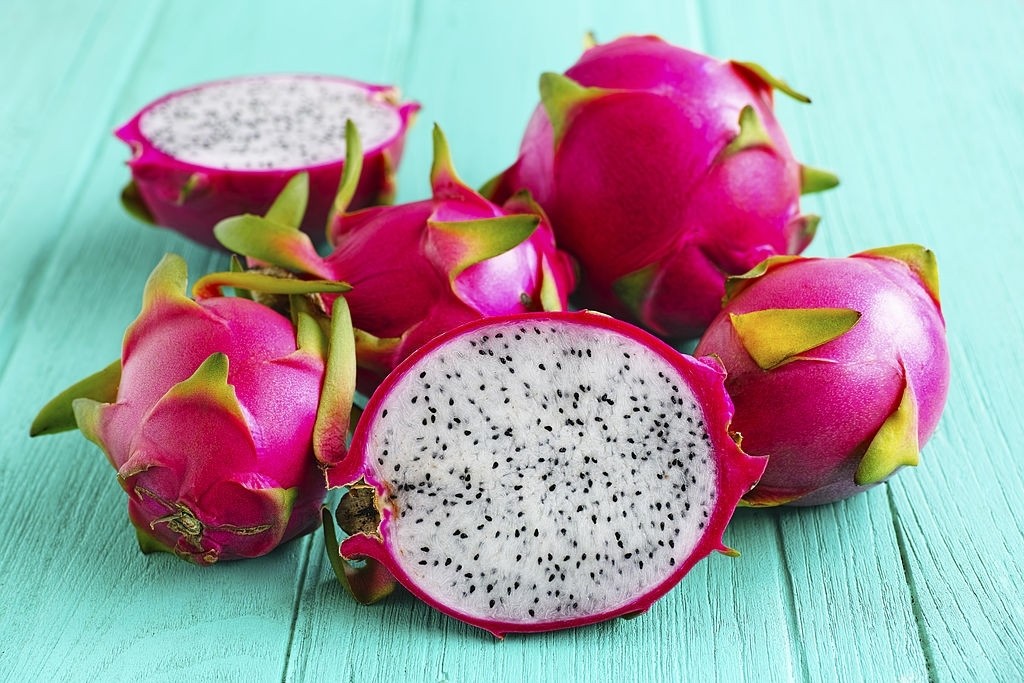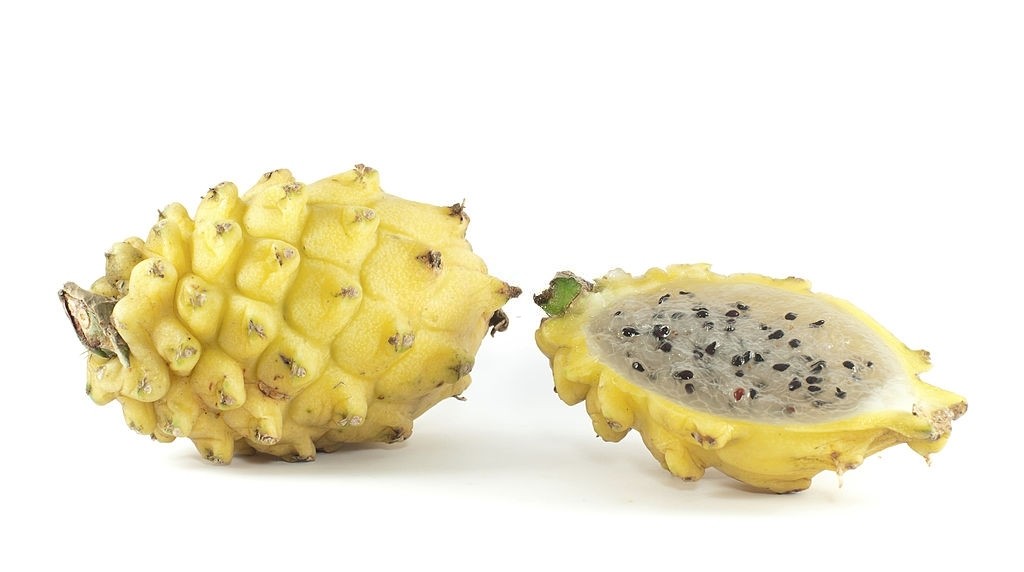Learning how to grow dragon fruit in California may seem overwhelming for beginners.
With certain growing conditions required to make sure your crops thrive, I understand how this can be a bit of an ordeal for some people.
However, here is a surprising fact about dragon fruit – it is actually easy to grow!
If you are in California and looking to include this crop in your garden, there are simple steps you need to know. So, keep reading and discover these insider tips and tricks to a healthy and thriving dragon fruit in your very own yard!

How to Grow Dragon Fruit in California – Quick Facts Before You Start
Before you learn how to grow dragon fruit in California, it makes sense to get to know this crop first – the different varieties, its growth pattern and preferred growing conditions.
Dragon fruit also comes with different names such as strawberry pears or pitaya. Most importantly, this fruit has an exotic exterior – a deep shade of pink with thorn-looking features surrounding it.
This is a tropical fruit, yet it can also grow in subtropical and even frost-prone locations. However, the latter requires a bit of extra care and technique.
There are three types of dragon fruit. These varieties differ in terms of their appearance, both interior and exterior.
1. Hylocereus Costaricensis

This type of dragon fruit comes with a red shell. The flesh is also a deep red, which is almost blood-like. It tastes slightly sweet when ripe.
2. Hylocereus Undatus

At first glance, it looks just like the first variation of dragon fruit. However, the only difference is once you cut it open because the flesh is white in color.
3. Hylocereus Megalanthus

This is a rare type of dragon fruit that is uncommon in most gardens. The exterior has more thorns than the other two variations. Moreover, the shell is yellow and the flesh is white.
No matter what type of dragon fruit, there is one common denominator among all three – the seeds. The pulp is filled with tiny seeds, quite like those of kiwi fruit. These seeds dot the interior, giving it an extraordinary appearance.
Furthermore, the fruit tastes sweet once it has reached its peak of maturity. Do take note that the pink flesh is much sweeter than the white one.
Growing Conditions of Dragon Fruit
As mentioned earlier, dragon fruit thrives mainly in tropical and subtropical regions. It is widely found in Asia, as well as in Central America.
Generally, the flowering season is in summer, specifically in the warmest climates during this time of the year. They may also blossom 4 to 8 times per year, depending on the hardiness zone of a particular location.
In zones 9 to 11, you can expect dragon fruit to go through the flowering phase about 2 to 3 times annually. Interestingly, these crops have lovely flowers that bloom during the night.
In California, these flowers open only for one night unlike in other states where it can occur more than once. Because of this unique characteristic of the fruit, it is often called “Night Blooming Cereus”.
5 Tips on How to Grow Dragon Fruit in California
It is important to note that dragon fruits take quite long to ripen. In fact, they mature after about 45 to as long as 150 days. The buds can also extend from 9 to 14 inches in length, then they leaf out after 45 days.
Now that you know the basic features of dragon fruit, you are probably wondering how to grow dragon fruit. If you are in California, you are fortunate because it should be able to grow and thrive well in this part of the country.
Here are some tips on how to grow dragon fruit in California that should help you get started.
1. Consider planting during a favorable climate.
Dragon fruit thrives in an area with a very warm climate, as long as it is not cooler than 28 degrees Fahrenheit. In fact, it prefers regions with USDA plant hardiness zones between 10 and 11.
Northern California is between 5A to 10B while Southern California ranges from 5A to 11A. When it gets colder, particularly in zone 9, you need to protect your crop from frost.
2. Too much sun is not a great idea.
Although dragon fruit likes warmth, it does not do well in very hot climates. It requires full sun, yet it also needs some shade. Otherwise, it may be prone to sunburn and dryness. This is why I recommend that you plant your crops in an area that gets occasional shade during some parts of the day.
3. Use the right soil.
The best soil to use for planting dragon fruit is one that is well-draining. Thus, sandy soil is perfect for this crop.
Moreover, the soil should also be rich in organic materials and salinity levels. As for the pH level, it should be anywhere from 6 to 7.
4. A larger space is better.
Next, you need to understand that dragon fruit is an extremely large crop to plant in your yard.
It requires a spacious room for it to spread its roots. This is why I recommend that you provide a minimum of 8-foot spacing to allow your crops to yield its maximum fruiting potential.
If space is an issue, you can also prune your crops and keep it in a container. This minimizes the upkeep effort required when your area is outside zones 9 through 11. Regular pruning is optimal to keep your plant to its smaller stature.
5. Water it right and add fertilizer.
Your crop gets its food not just from the organic matter in the soil but also from ample water and fertilizer.
I suggest you give some fertilizer to your crop once a month while it is still in the active growing phase. However, it is not advisable to keep feeding it in the winter.
As for watering, you need to water only when the top portion of the soil is dry. Otherwise, do not water excessively. The idea is to keep the soil moist and not drenched.
Still in need of tips on how to grow dragon fruit in California? I highly recommend that you watch this video for pro tips you need to know:
Bottom Line
Dragon fruit is famous for its sweet taste and nutritive value, as well as its exotic appearance.
If you are planning on growing this fruit in your California garden, be sure to follow these tips to make sure you get the best yield for a higher return on your investment.